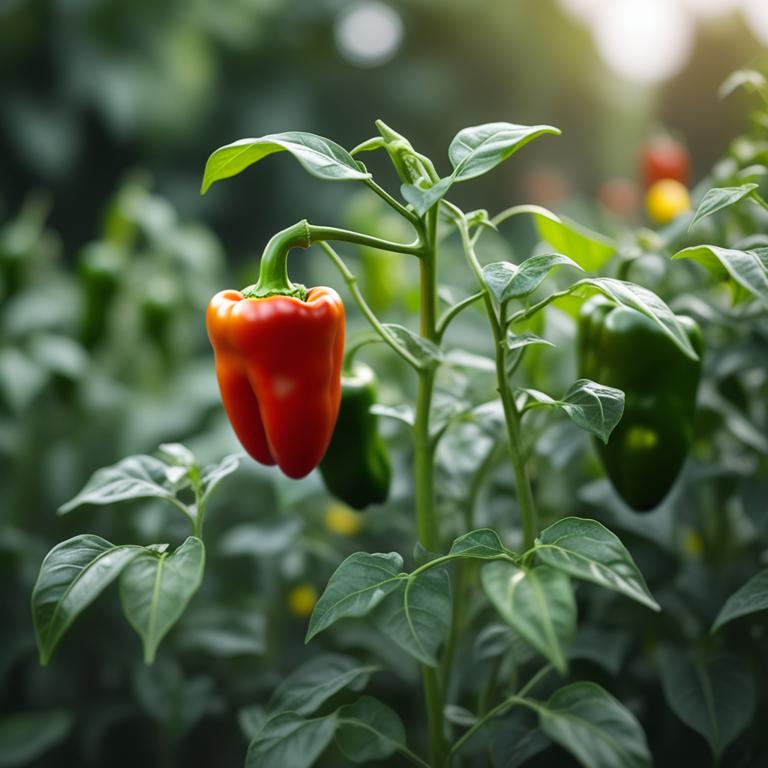7 Most Common Side Effects of Capsicum Annuum

1. Itching Occurs
Capsicum annuum itching occurs when some individuals come into contact with the plant's sap, which contains a chemical called solanine. This chemical can cause an allergic reaction, leading to itchy skin, redness, and in some cases, even blisters. If you experience itching after handling the plant, it is essential to wash the affected area thoroughly with soap and water to prevent further irritation.
2. Skin Burns
Capsicum annuum skin burns can occur when handling the plant or its fruits, particularly if the skin comes into contact with the plant's sap or oils, which contain capsaicin, a potent irritant. This can cause redness, itching, and a stinging sensation on the affected area, often accompanied by increased heart rate and sweating. In severe cases, the skin may become blistered or develop open sores, requiring medical attention to prevent infection.
3. Rashes Appear
Capsicum annuum rashes appear due to an allergic reaction to the capsaicin or other compounds found in the plant. These rashes can be uncomfortable and may be accompanied by itching, redness, and swelling of the affected skin area. In severe cases, the rash may blister or become infected, requiring medical attention to prevent further complications.
4. Inflammation Develops
Capsicum annuum inflammation develops in some individuals due to the capsaicin content found in the plant, which can cause irritation and discomfort to the skin and mucous membranes. The capsaicin binds to pain receptors, leading to a release of chemical mediators that cause inflammation and swelling. This side effect is often associated with consuming spicy foods or handling the plant without proper protection.
5. Irritation Happens
Capsicum annuum irritation happens when the skin comes into contact with the plant's sap or broken skin, causing redness, itching, and swelling due to the release of capsaicin, a chemical compound that acts as a natural defense mechanism. This irritation can be intense and may persist for several hours, making it uncomfortable for those who are affected. The severity of the irritation can vary depending on the individual's sensitivity and the concentration of capsaicin present in the plant.
6. Redness Appears
Capsicum annuum redness appears due to the presence of capsaicin, a chemical compound that causes blood vessels to dilate, resulting in increased blood flow to the affected area. This leads to a sensation of warmth or burning, often accompanied by a noticeable red discoloration of the skin. Prolonged exposure to capsaicin can exacerbate this effect, making it more intense and uncomfortable.
7. Pain Is Felt
Capsicum annuum pain is felt due to the presence of capsaicin, a compound found in the plant's placental tissue and seeds. This compound binds to pain receptors in the skin, causing a burning sensation that can be intense and temporary. The sensation is often accompanied by sweating, flushing, and tearing, and can be alleviated by removing the source of the capsaicin or using dairy products to bind to it.